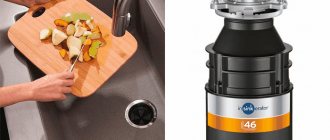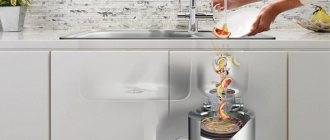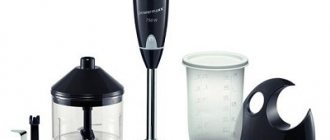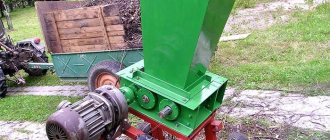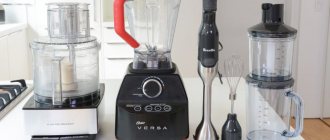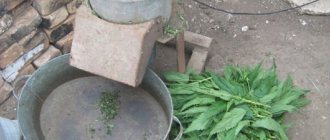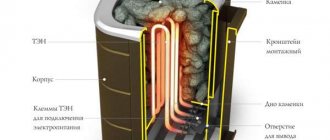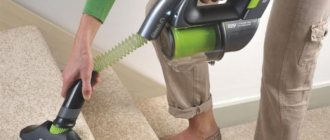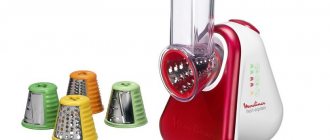A disposer is a shredder of household organic waste and food debris installed directly under the kitchen sink.
Its purpose is to transform food waste into a mass, which, when washed off with water, easily goes down the drain.
Such a kitchen shredder will help people who are concerned about the problem of separate waste collection, because the question of where to put food waste will lose its relevance.
What it is?
Most people collect food scraps in buckets before washing dishes and then start washing.
The Disposer is designed to eliminate this operation in the kitchen. With its use, the need for waste buckets and scraping leftover food from plates disappears.
Before using the disposer, meshes were installed in sinks to prevent waste from entering the drain.
Now the mesh is removed completely and everything is done to ensure the best penetration of food debris into the sewer system.
In essence, the action of a kitchen disposer resembles a meat grinder through which food remains are passed , turning into a paste-like mass that is easily washed off with water. The device is installed directly under the sink and integrated into the drainage system.
How to install a shredder
Installation of the drain is very simple.
- First, the upper part is installed through rubber gaskets, then the lower part with screws is used.
- Afterwards, the structure is tightened using threaded hex screws.
- The structure is installed in the grooves of the chopper and secured by turning the body.
- Drains and power supply are connected.
This completes the installation. To install the pneumatic button, you will need a pen drill. Drill a hole for the button in a dry area of the countertop, located near the kitchen sink. The drain hole in the sink should have a diameter of 90 mm, which corresponds to the European standard. Most modern sinks come with exactly this hole diameter.
If the kitchen sink drain hole is smaller, you can enlarge it using a special tool. If the sink consists of two bowls, it is better to install the waste chopper in the smaller bowl. Because when installed under the main bowl, the chopper divides the space in the cabinet under the sink, which is not entirely convenient.
If the food chopper is used correctly, its breakdown and a call to the service center is unlikely to happen.
The chopper is one of the most necessary components in the kitchen, naturally, after the sink and mixer. Life with a chopper will become more comfortable. You won't have to take out the trash often. This is especially true for those who bought an apartment in a new building without a garbage chute. There will be no more unpleasant smell from the trash can. The only thing that will get there is the packaging.
What kind of waste does a kitchen recycler process?
Shredder manufacturers recommend using disposers for almost all waste , including:
- fruits and vegetables;
- rinds of watermelons, melons, pumpkins;
- chicken and fish bones;
- any cereals, bakery and pasta products;
- shells of all types of nuts;
- napkins and cigarette butts.
There is a long list of items that should not be thrown down the drain in hopes of being shredded in a disposer.
First of all, these are different:
- films;
- plastics;
- fabrics;
- rubber and metal products;
- products with long fibers or strands;
- hair.
Disposing of the listed materials into the disposer will result in equipment failure.
As a rule, all disposers are equipped with a locking system. This means that if a foreign object or too hard bone gets into it, a system is activated that turns off the device.
Types and principle of operation
Next, we will describe the operating principle of a food waste shredder and a food destroyer for the sink, or, as it is also called, a disposer.
The vast majority of disposer models are equipped with an electric drive . But mechanical models that operate under the influence of water pressure are also used.
How do mechanical models work?
For successful operation of mechanical shredders, a water pressure of at least 4 bar is required. With a normally functioning plumbing system, this is the actual water pressure in the tap.
But the pressure indicator does not depend on the residents; a decrease in water pressure is especially often observed on the upper floors of houses.
Of course, the shredder will have no effect if the water pressure in the tap is low.
Electric shredders
Electric kitchen dispensers are in greatest demand.
The dispenser equipped with an electric drive does not depend on the water pressure in the tap . It just needs to be launched by pressing a button.
Batch loading models load waste first. With continuous loading, the shredder is started first, and then waste is placed into it for shredding.
There are also automatic models that do not require pressing a button, but turn on when waste gets into them.
Turning on the device
The “Start” button can be placed on the sink or on the countertop. The process of turning the device on and off should be comfortable for the user.
In any case, you should take into account the recommendations of specialists when choosing a waste shredder model.
Selection criteria and safety
The selection criteria for modern models are based on ease of use and cost of equipment.
In addition, it is worth paying attention to a number of indicators :
- chopper power;
- rotational speed;
- anti-corrosion coating;
- launch type;
- presence of reverse;
- availability of a repair service nearby;
- availability of consumables and spare parts;
- equipment noise during operation;
- lifetime.
A very important point - the disposer is considered an absolutely safe device ; any model is installed so that the cutting working parts of the equipment are inaccessible during operation.
How to choose a chopper
When choosing the best chopper for the kitchen, you need to pay attention to its characteristics. Its performance and durability will depend on these indicators:
- Power. In everyday life, as a rule, a kitchen waste shredder with a power of up to 400 kW is used. In devices used in public catering, this figure is much higher - from 500-800 kW. The price of the device is directly dependent on the power.
- Volume of the crushing chamber. The more powerful the shredder, the larger the chamber. The average volume of the chopper chamber is from 0.7 to 1.5 liters.
- Material of chamber and cams. Stainless steel is considered the most reliable and durable material.
- Rotational speed. The performance of the chopper depends on the rotation speed. The average rotation speed is 1500 rpm.
- Noise level. More expensive models usually have additional sound insulation.
- Weight. The weight of the device can reach up to 11.5 kg. For such a weight, you need a sink made of good composite material or steel with optimal thickness.
- Guarantee. The warranty period can vary from 2 years for a budget model and up to 8 years for more expensive models.
Is a disposer really necessary?
The introduction of disposers into the everyday life of every family is not yet supported at the state level. The reason is that authorities fear a significant increase in the load on sewerage and treatment systems.
The authorities of large American cities experienced similar doubts half a century ago. They conducted an experiment on the use of disposers in order to determine the consequences on sewer systems.
The result was surprisingly favorable:
- water consumption increased slightly, which did not have any negative impact;
- the energy consumption for operating the disposer turned out to be comparable to using one additional light bulb;
- The problem of accumulation of wastewater saturated with biological waste was solved by installing digesters for biogas production.
The conclusion that the Americans came to is that the use of disposers not only does not have a negative impact , but can also bring direct economic and environmental benefits.
The American Ministry of Health recommended installing disposers in all houses under construction; today more than half of the kitchens of American houses are equipped with this device.
Benefits of use
Garbage reform today is at least puzzling due to its ill-conceived nature.
Russians, in principle, are not against separate waste collection, but do not see any practical sense in this idea of the authorities.
The waste recycling system is not debugged and not thought through to its logical conclusion.
Perhaps reform ideas were calculated by people who had never washed dishes or cooked food.
Because the biggest difficulty of separate collection lies precisely in separating food products from other solid waste.
Biodegradable food scraps account for approximately 30% of all waste.
If these unused products go down the drain and are then turned into biogas , then the problem of waste separation will be practically solved. At least for big cities and the capital.
It's not at all difficult to put paper and plastic in separate bags, because the main problem - leftover food - goes down the drain.
To be completely honest, it is unlikely that anyone will reach into a garbage bag to sort through its contents again if they accidentally threw leftover food into it.
Positive consequences of using disposers in Moscow apartments:
- about 2.5 million tons of food waste annually will be processed into biogas at mini-thermal power plants;
- the amount of waste disposed of in landfills will be reduced by the same amount;
- processed waste in the form of biogas will be used for heating and electricity generation;
- in addition to gas, food scraps can be processed into high-quality fertile soil and a number of other necessary goods and products;
- the use of household shredders will simply make life easier for millions of housewives in Moscow and other large cities.
The negative side of the issue is the price of disposers. Still, the cost of one device from 10 thousand rubles is expensive for most people.
To quickly introduce disposers into the everyday life of every person, it is necessary to radically reduce the price of the product and organize installation and repair services.
You can use the disposer in an apartment, private house, or country house.
The device is not in demand only in the case of using household food waste in a subsidiary farm - for pet food, for the production of biofertilizers, or if there are other alternative options for getting rid of kitchen food scraps.
